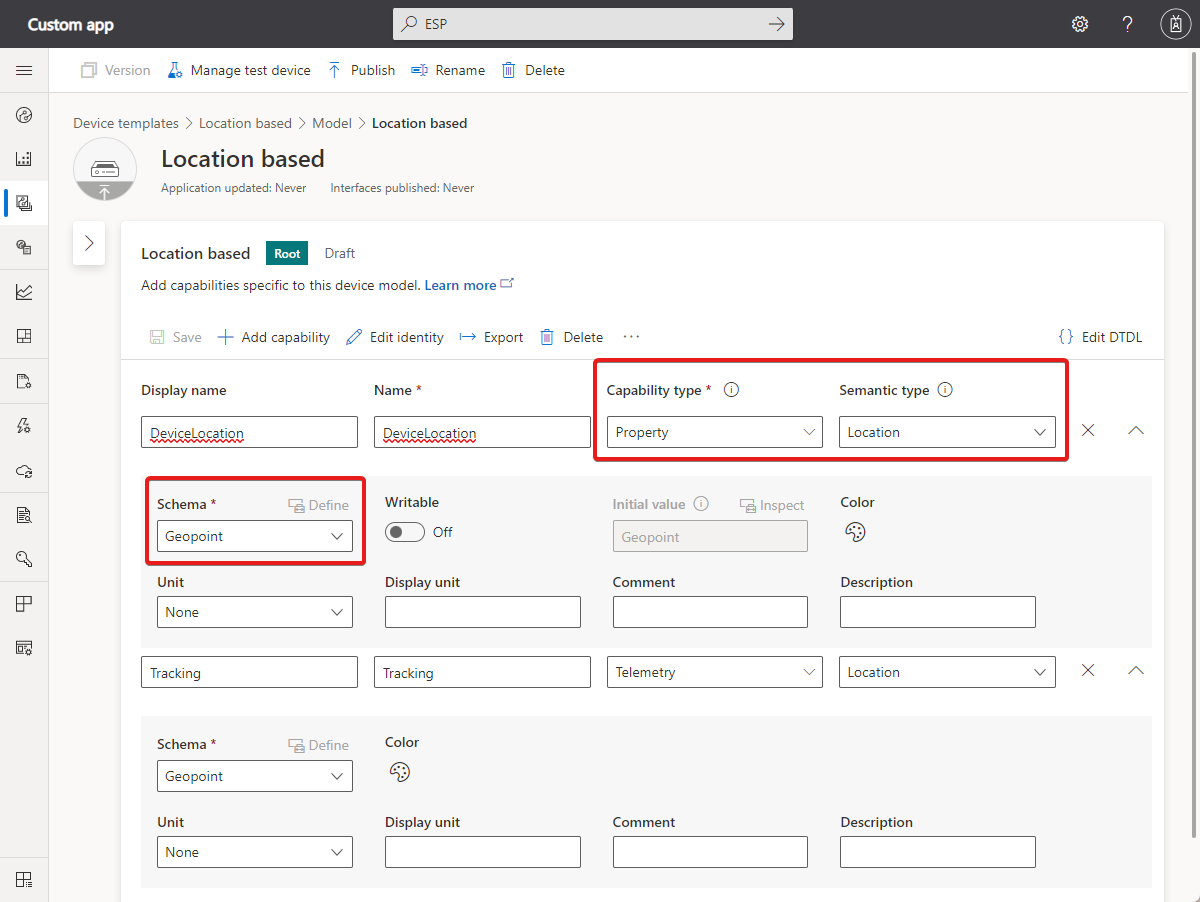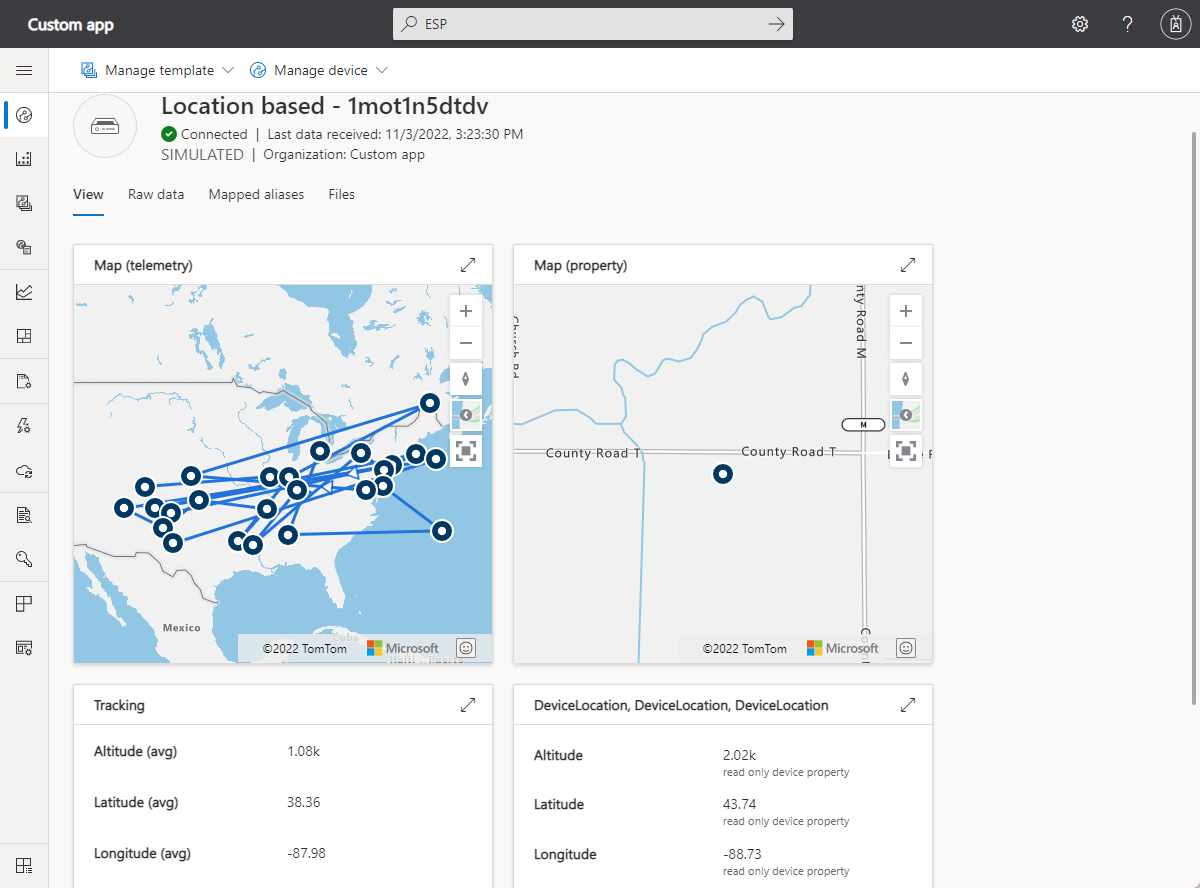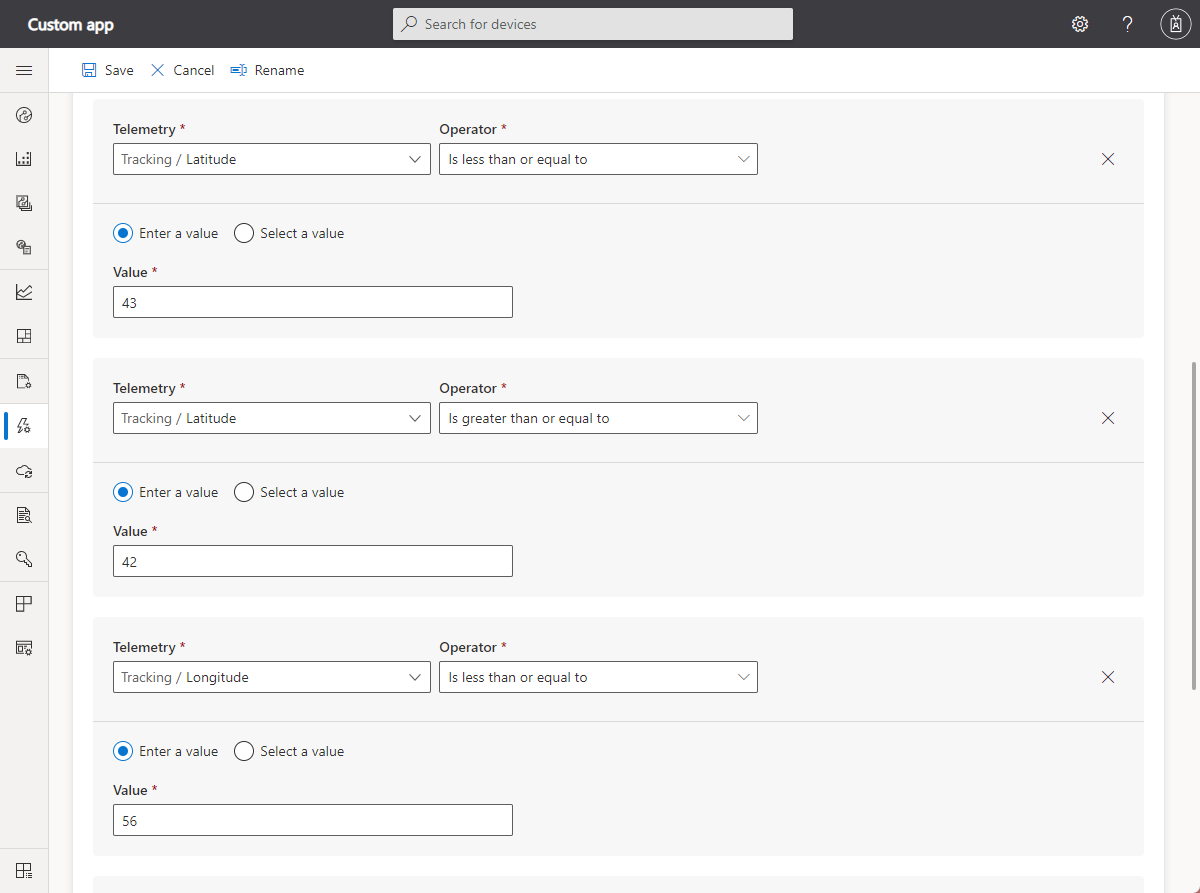Use location data in an Azure IoT Central solution
This article shows you how to use location data in an IoT Central application. A device connected to IoT Central can send location data as telemetry stream or use a device property to report location data.
You can use the location data to:
- Plot the reported location on a map.
- Plot the telemetry location history on a map.
- Create geofencing rules to notify an operator when a device enters or leaves a specific area.
Add location capabilities to a device template
The following screenshot shows a device template with examples of a device property and telemetry type that use location data. The definitions use the location semantic type and the geolocation schema type:
For reference, the Digital Twins Definition Language (DTDL) v2 definitions for these capabilities look like the following snippet:
{
"@type": [
"Property",
"Location"
],
"displayName": {
"en": "DeviceLocation"
},
"name": "DeviceLocation",
"schema": "geopoint",
"writable": false
},
{
"@type": [
"Telemetry",
"Location"
],
"displayName": {
"en": "Tracking"
},
"name": "Tracking",
"schema": "geopoint"
}
Note
The geopoint schema type is not part of the DTDL specification. IoT Central currently supports the geopoint schema type and the location semantic type for backwards compatibility, see IoT Central extension.
Send location data from a device
When a device sends data for the DeviceLocation property shown in the previous section, the payload looks like the following JSON snippet:
{
"DeviceLocation": {
"lat": 47.64263,
"lon": -122.13035,
"alt": 0
}
}
When a device sends data for the Tracking telemetry shown in the previous section, the payload looks like the following JSON snippet:
{
"Tracking": {
"lat": 47.64263,
"lon": -122.13035,
"alt": 0
}
}
Display device location
You can display location data in multiple places in your IoT Central application. For example, on views associated with an individual device or on dashboards.
When you create a view for a device, you can choose to plot the location on a map, or show the individual values:
You can add map tiles to a dashboard to plot the location of one or more devices. When you add a map tile to show location telemetry, you can plot the location over a time period, as shown in the previous screenshot.
Create a geofencing rule
You can use location telemetry to create a geofencing rule that generates an alert when a device moves into or out of a rectangular area. The following screenshot shows a rule that uses four conditions to define a rectangular area using latitude and longitude values. The rule generates an email when the device moves into the rectangular area:
Next steps
Now that you've learned how to use properties in your Azure IoT Central application, see:


